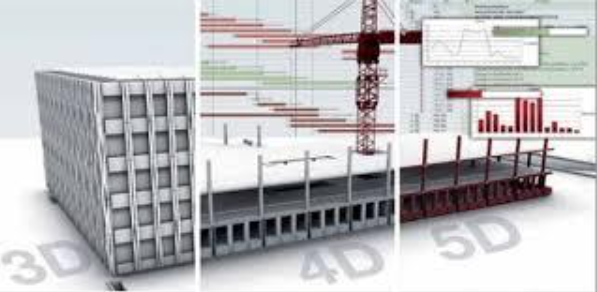The objective of this white paper is to explain certain aspects of Product Lifecycle Management (PLM) solutions that are commonly under-valued, under-appreciated, or generally overlooked by PLM customers and quite often the vendors who sell or implement PLM software. Each one of these aspects, when considered and actively managed, is likely to have a significant positive impact on PLM’s value to the extended enterprise and its users. Before we dive into the five undervalued PLM aspects,
- PLM Strategy
- Network Effects
- Process Management
- 3D/4D/5D Visualization
- Deployment
I should first provide a definition for the term PLM.
PLM Definition
PLM foremost is an all-encompassing business strategy for innovation, new product development (NPD) and product information management from ideation to end of life (i.e. the product lifecycle).
PLM software systems are an enabling technology for PLM strategy that:
- Provide a central repository for all product-related data for the extended enterprise
- Integrate people, data, processes, and business systems
- Let all stakeholders collaborate on a consistent set of information throughout the entire product lifecycle
- Automate innovation and NPD processes
Building Information Modeling (BIM) is a specialization of PLM that develops a digital representation of physical and functional characteristics of a facility. A BIM (building information model) is a shared knowledge resource for information about a facility forming a reliable basis for decisions during its life-cycle; defined as existing from earliest conception to demolition.Traditional building design was largely reliant upon two-dimensional technical drawings (plans, elevations, sections, etc.). Building information modeling extends this beyond 3D, augmenting the three primary spatial dimensions (width, height and depth) with time as the fourth dimension (4D) and cost as the fifth (5D). BIM therefore covers more than just geometry. It also covers spatial relationships, light analysis, geographic information, and quantities and properties of building components (for example, manufacturers’ details).
1. PLM Strategy
Most experts define PLM first as a corporate strategy and secondly, as a set of business software applications that enable that strategy. Software vendors, in their role of selling software, focus very heavily on the features and functions of their software.
What is under-valued, more often than not, is a focus on your corporation’s PLM strategy. To use an analogy, PLM Strategy and PLM software are akin to Fitness Strategy and Exercise Equipment. You can purchase a room full of exercise equipment and own the tools or you can get a gym membership and “rent” the tools for a fitter you. However, without a well-defined fitness strategy; such as (pick one):
- weight-loss
- muscle gain
- greater balance and flexibility
- triathlon preparation
your use of the tools will be un-directed, most likely sporadic, and highly unlikely to provide the value that you want.
PLM Strategy is just as important on a business level as fitness strategy is at a personal level. To achieve the most value from your PLM software investments, define a strategy that has the following components:

- Pick a tough but achievable goal (one very difficult to achieve without the tools) that everyone can understand
- Determine what behaviors need to change that inhibit your strategy and what new behaviors are needed that enable your strategy
- Create a roadmap of achievable targets that build toward the ultimate goal
- Monitor your progress and make adjustments periodically to continue tracking toward the goal
- Change the goal when achieved or new circumstances warrant
When PLM Strategy is applied, there is much less likelihood of the PLM software becoming something akin to a glorified clothes rack.
2. Network Effects
The definition of PLM described earlier uses the adjective “all-encompassing”. PLM software is considered “Enterprise” software in that its usages span across most departments within a corporation and can include external parties to the enterprise; customers, suppliers, etc. Many consider PLM software as a “Platform” for the business processes that it can automate.
Like many other software and technologies that can be put into use by a broad range of people, PLM software benefits from Network Effects in that the more who use the product or service, the higher its value becomes to the group.
PLM software’s value increases come from two different aspects of Network Effects:
- Diversity of users
- Relationships among business objects
Let’s cover these two types of network effects in more detail.
2.1 Diversity of users

More engineers using a PLM system provides value, but much more value is gained by users who interact with engineers or engineering deliverables as they use the PLM system. Most PLM systems tout the ability to enable collaboration and innovation. The more people with different perspectives on the product, system, building, etc. being developed actually using the PLM system, the more innovations will be discovered, the more errors will be avoided earlier in the development cycle, and the more achievable the PLM strategy will be.
2.2 Relationships among business objects

The second network effect that is under-valued within PLM systems is the power of relationships. PLM software can manage a multitude of business objects such as documents, CAD and CAE files, images, forms, database records, etc. Most can organize said business objects in hierarchical folder structures as popularized by the Windows and Apple operating systems. However, most PLM systems can also manage the relationships or linkages among those various business objects.
For example, a Design Specification document can be linked to the specific Engineering Design calculations that respond to that specification which in turn may be linked to the Computer-Aided-Design file that describes the geometry of the design which can be linked to the Computer Aided Analysis file that tests whether the geometry will (theoretically) meet some of the requirements in the Specification, and so on through the chain of documents and relationships.
The undervalued power in using these relationship links is that the PLM software makes it more efficient for users to understand the cause and effect of data changes; thus improving decision-making. Additionally, searching for related information is more efficient; thus increasing productivity, reducing re-work, and improving decision-making.
How much more will network effects increase the value of PLM? That will depend on many factors: selection and adherence to the strategy, number and diversity of users, processes under control, etc.
3. Process Management

PLM systems are capable of storing business objects and the relationships among them. How those business objects change over time is often done outside of the PLM system, with manual processes or in other less-connected business systems. Fortunately, most PLM systems have the ability to automate business processes with workflows, conditional logic rules, and links to related business objects involved in the process. Most will have pre-defined business processes (e.g. change management, new part introduction) and process editors so that modified and entirely new business processes can be created.
Unfortunately, the majority of PLM adopters do not take full advantage of this valuable capability. Processes under PLM system control bring visibility and measurement into what are often opaque processes. If something can be measured, it can be improved. Thus, PLM process management is valuable for its ability to support continuous improvement through fact-based measurement of business processes. Process automation reduces costly errors and exposes bottlenecks in real time and trends over time. Process Management also benefits from network effects in that its value increases as more users and more business processes are tracked and measured.
4. Visualization
Since PLM systems are designed to manage the data and processes related to physical products or structures, most have the ability to make available three-dimensional (3D) visual representations of the components, assemblies, and structures to more users. Engineers in this modern age, by and large, create designs in 3D and use those to create derivative two-dimensional (2D) drawings, elevations, sections, etc. More often than not, it’s the 2D drawings that are shared throughout the extended enterprise.
What is undervalued is not using the 3D geometry directly throughout the extended enterprise. Human beings perceive the world in 3D (4D if you are into theoretical physics). Utilizing 3D more directly has the following value:

- Decreases translation errors (e.g. missing dimensions, incorrect views, etc.)
- Increases human understanding of spatial relationships and identification of interferences
Each of which, increases quality as errors are exposed earlier in the development and construction phases; and thus less expensive to resolve than if discovered once the design physically exists.
Additionally, 4D (3D plus time) and 5D (4D plus cost) allow reporting of time and cost changes to become more visual and thus easier to understand. A phenomenon similar to the use of charts and graphs as a more efficient way to understand tabular data.
5. Deployment
Implementation is the process of installing, configuring, customizing, and typically training users on new systems. Deployment can be defined as making a new system available to its user community. Deployment should be considered as separate from but inter-related with implementation.

The reason that deployment is undervalued in PLM is that many PLM software vendors and independent systems integrators focus on the complexities of implementations and fail to pay adequate attention to the complexities of deployment. To many, having a system operational and providing training to its users constitutes all that is needed for deployment. To some, implementation is the easier part, deployment is the tougher part of the project due to the strength of people’s inherent resistance to change or the conservative cultures of most companies. This conservatism may manifest itself in ways both subtle and obvious:
- Subtle example: creating requirements for the new system to mimic the previous system
- Obvious example: failing to use the new system once online due to any number of reasons
Deployment often requires different skillsets than those employed by the implementation project team (both client and consultant members). Skills in communications, organizational change management, human resources, and adult learning are often needed for deployment planning and execution. Additionally, deployment planning is most effective when it starts at the beginning of the project and not when it is considered near the end of the implementation.
What is the value of proper deployment practices?
- Stakeholder resistance to change is reduced through better and more frequent two-way communication and incorporation of feedback gained before and during the implementation
- User productivity suffers less at the onset of using the new system
- User productivity returns to and exceeds previous productivity levels sooner
- It is more likely to achieve the returns on investment and strategic goals when all users are applying the PLM system as intended.
Conclusion
There will be many topics covered before and during the implementation of a PLM system. Many benefit the software vendor’s or systems integrator’s efforts to make a software sell and implement the software. Additionally, many companies stall in their PLM maturity after an initial failure (i.e. the skeptics’ self-fulfilling prophesy) or initial successes (i.e. victory is declared before the war is won). The PLM program may remain stuck when the PLM strategy is not strong or not strongly enforced by Management.
Based on this author’s experience, these five aspects (PLM Strategy, Network Effects, Process Management, Visualization, and Deployment) are often the over-looked areas that can increase PLM’s value to the organization most dramatically when actively pursued.
